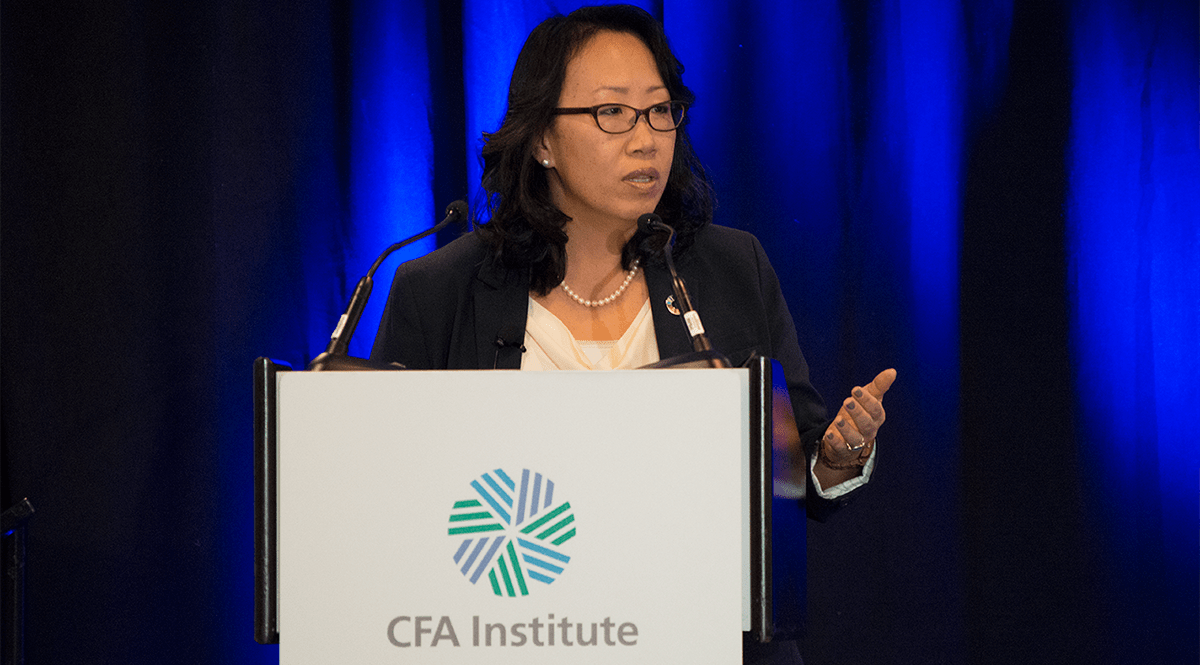[ad_1]
Investment professionals tend to fall into one of two categories based on their attitudes toward environmental, social, and governance (ESG) issues, but adherents to both these schools of thought have one thing in common: They’re ready to spend less time talking about ESG.
One group thinks ESG factors aren’t part of traditional investment analysis, and the other believes ESG concerns are integral to the investment decision-making process.
Mary Jane McQuillen, managing director and head of the ESG investment program at ClearBridge Investments, falls into the second group and considers ESG analysis a core component of investment management. At the CFA Institute Equity Research and Valuation 2019 Conference in New York City, she explained that ESG’s foundational ideas were originally discussed as ways to improve investment returns.
“Many of us who were early practitioners were very much focused on thinking about this as an investment approach,” she said. “It’s integrating environmental, social, and governance factors that are relevant and material to the sector, as well as to the company, in your fundamental analysis.”
More firms have begun to incorporate ESG factors into their investment decisions for practical reasons. McQuillen pointed to the most recent ESG survey from Russell Investments, which found that fewer active managers are citing ethics as the reason for integrating these concerns into their investment processes. More are motivated by superior risk-adjusted returns.
McQuillen explained that many companies have looked through an ESG lens to identify process improvements and reduce costs. Today’s ESG success stories look like business success stories:
ClearBridge Investments has also successfully engaged with companies to improve their performance. McQuillen discussed one of their investments where executives resisted a proposal to measure the firm’s carbon emissions. Eventually, they came around and saw the value of tracking that information relative to the company’s peers.
“They became not only the best company in technology to report on their emissions,” she said, “but they also had the highest target to reduce their emissions.”
Many of the ideas driving ESG analysis are already part of standard investment valuation, even if people are reluctant to discuss them. McQuillen recounted some challenging conversations with company executives who felt like their business decisions were being undermined by moral concerns. “We’re not telling you not to do anything!” McQuillen recalled explaining to them. “We’re just saying, in our approach, we’re thinking of where we can find long-term investment opportunities.”
Whether they are ESG skeptics or true believers, if investment professionals can agree that the idea is to improve long-term performance, they may realize that the label is as noteworthy as the water that fish swim in.
If you liked this post, don’t forget to subscribe to the Enterprising Investor.
All posts are the opinion of the author. As such, they should not be construed as investment advice, nor do the opinions expressed necessarily reflect the views of CFA Institute or the author’s employer.
Image courtesy of Paul McCaffrey
[ad_2]
Image and article originally from blogs.cfainstitute.org. Read the original article here.

